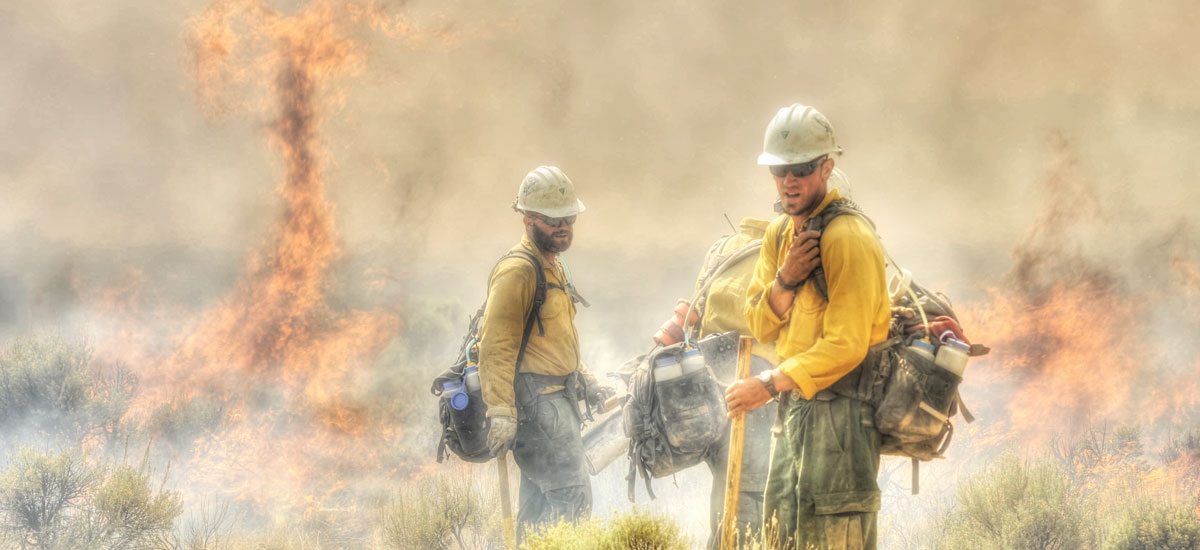Like much of the Pacific Northwest, Oregon is facing the risk of a bad wildfire season this summer. With 86 percent of the state in drought and 34 percent experiencing extreme or exceptional drought conditions, Governor Kate Brown has declared a drought emergency for 15 counties. The state’s May water supply outlook predicts that, with sixty percent of the monitoring sites setting records for the lowest peak snowpack levels in 30 years, it is likely that there will be water shortages this summer. Capping carbon emissions, as proposed in HB 3470, is an important contribution Oregon can make toward limiting future climate risks, including from drought and wildfires.
Climate change contributes to wildfire risks
Hotter, drier conditions caused by climate change are contributing to worsening wildfire risks in the Western United States. As wildfires become more frequent and intense, the costs to fight them are also growing.

Wildfires can endanger lives and cause costly damage to homes. They also create dangerous and unpredictable conditions for firefighters. Photo: BLM.
Oregon experienced severe wildfire seasons in 2013 and 2014. The 2014 fire season saw nearly 900,000 acres burn in the state, with fire fighting costs reaching over $280 million. The Buzzard Complex Fire, the largest in the nation last year, burned nearly 400,000 acres. With low snowpack and drought conditions this year, experts predict that the 2015 wildfire season will start earlier and last longer.
The cost to residents of Oregon is also increasing, as development proceeds in or near wildfire-prone areas. Currently, over 107,000 homes in Oregon—8 percent of total residential properties—valued at $12.7 billion are at high risk of damage from wildfire.
A comprehensive strategy to cut current wildfire risks by investing in better wildfire and forest management practices, changing the way we fund firefighting, and limiting development in wildfire prone areas, coupled with strategies to limit future wildfire risks by cutting emissions, is required.
Rising sea level and ocean acidity pose threats to Oregon fisheries
Changes in sea level and ocean acidity caused by global warming pose major threats to Oregon’s economy and environment. Rising seas, warmer ocean temperatures, and changes in the timing of freshwater flows from rivers may contribute to significant changes in Washington’s estuaries, an important habitat for salmon. The increasing acidity of ocean surface waters has been definitively linked to declines in hatchery production at oyster farms near Oregon’s Netart’s Bay, due to the softening of oyster shells, and could pose risks to the industry.
According to the National Climate Assessment, increased ocean acidification is projected to continue altering the marine food web by decreasing the abundance of shell-forming species, which in turn threatens other culturally and commercially significant marine species such as Pacific salmon.
Cutting carbon emissions to lower future climate risks
Addressing future climate risks, like wildfires and drought, will require making deep cuts in global carbon emissions as well as taking steps to build resilience to impacts already underway. Oregon can do its part to contribute to that global effort by implementing a suite of measures to cut its emissions.
Oregon has already set goals of reducing heat-trapping emissions to 10 percent below 1990 levels by 2020 and to 75 percent below 1990 levels by 2050, but it needs an enforceable plan to get there. The clean fuels standard adopted this year and the state’s renewable electricity standard, which is set to deliver 25% renewable electricity by 2025, provide a good start.
Capping carbon emissions, as proposed in HB 3470, would help ensure the state achieves emission reductions in line with its targets. The bill requires the state Department of Environmental Quality to come up with a comprehensive plan to ensure the state reaches its emissions reduction targets and it gives the DEQ the option of creating a cap-and-trade program to put a price on carbon. Carbon revenues could be invested in areas the state’s residents choose to prioritize such as clean energy, clean transportation technologies and support for low income families.
Policies to further increase the use of clean energy and clean vehicles, and improve the energy efficiency of buildings, cars, and industry, are also important. California and the RGGI states have ably demonstrated that adopting this type of a suite of complementary policies to cut carbon, enable a transition to clean energy, and stimulate innovation is a smart, cost-effective strategy. They can also help states comply with their Clean Power Plan goals.
Climate action urgently needed
Oregon’s policymakers should take action to implement an enforceable cap, and price, on carbon emissions to help the state address the risks of climate change and reap the benefits of a clean energy economy. This should be part of a suite of state and national policies to cut emissions and build resilience to the impacts of climate change.
